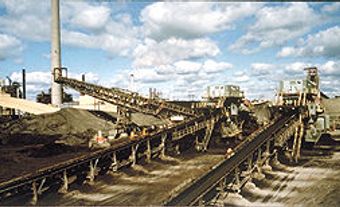Lloydminster, Alberta and Saskatchewan, incorporated as a city in 1958, population 19,645 in Alberta and 11,765 in Saskatchewan (2016 census); 18,032 in Alberta and 9,772 in Saskatchewan (2011 census). The city of Lloydminster is known as the “Border City” since it is located on the Saskatchewan-Alberta border, about 275 km west of Saskatoon and 250 km east of Edmonton. It is one of two communities in Canada split by a provincial boundary, the other being Flin Flon, Manitoba.
Settlement and Development
In 1903, approximately 2,000 colonists, led by Reverend Isaac Barr (see Barr Colonists), arrived in the area. The town was named after Reverend George Exton Lloyd, the Anglican minister who led the colonists after Barr’s departure.
When the provinces of Saskatchewan and Alberta were created in 1905, the fourth meridian was selected as the provincial boundary, dividing Lloydminster between the two provinces. For the next 25 years, there was a town of Lloydminster on the Saskatchewan side and a village of the same name on the Alberta side. In 1930, the two communities were amalgamated into a single town by an order-in-council in both provinces. The town became the tenth city of both provinces in 1958.
Economy
Lloydminster is in the heart of a rich agricultural region where a variety of crops are grown. Oil production and related manufacturing are other important economic activities to the area. Husky Energy Inc. operates several facilities in Lloydminster, including an upgrader which produces synthetic oil and diesel fuel, an asphalt refinery and an ethanol plant.

 Share on Facebook
Share on Facebook Share on X
Share on X Share by Email
Share by Email Share on Google Classroom
Share on Google Classroom



